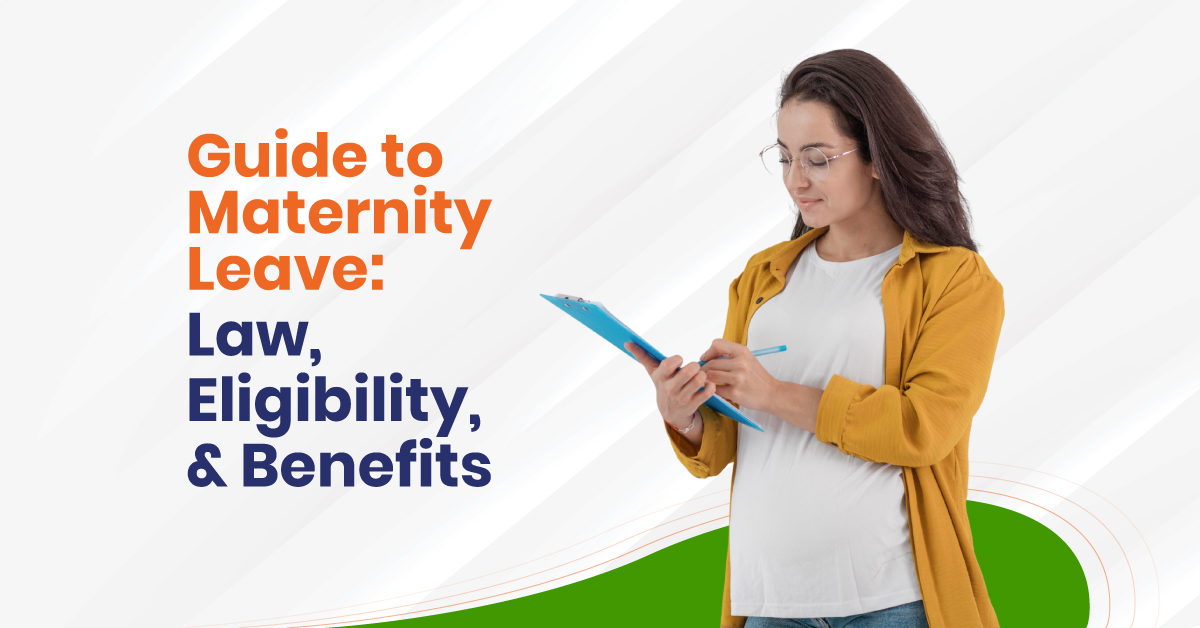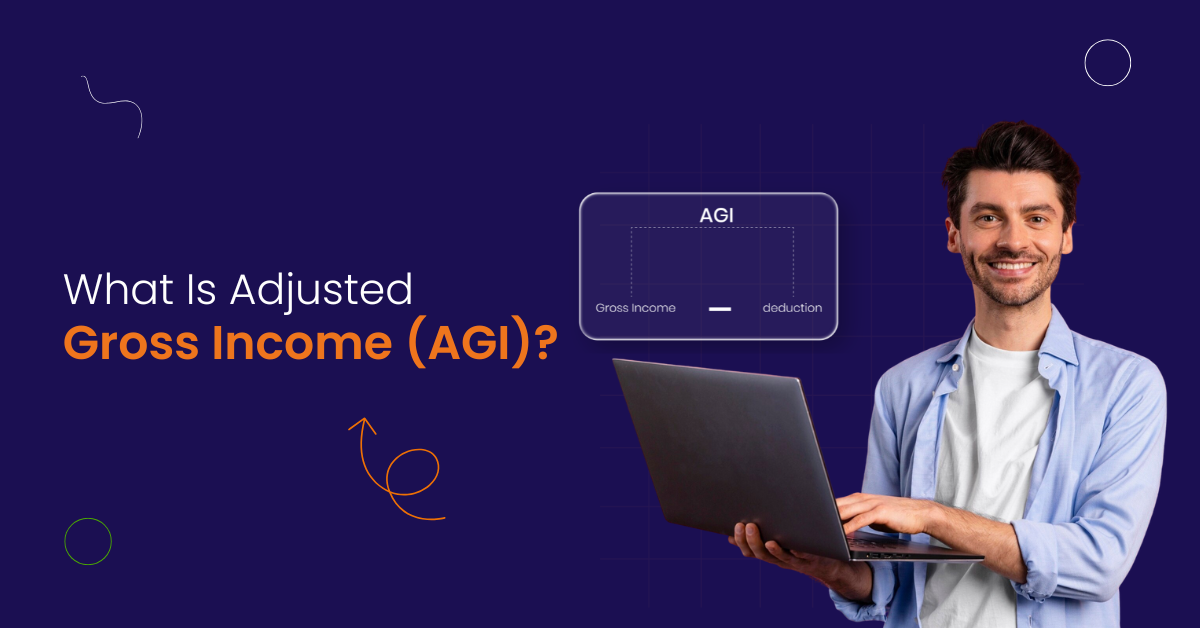Understanding Maternity Leave in Today’s Work Environment
For women employed across sectors, from tech and retail to manufacturing and services, maternity leave is more than a legal clause. It’s a foundational support system. A necessary break to honour the physical, emotional, and social responsibilities of motherhood.
India’s Maternity Benefit Act, first enacted in 1961 and updated in 2017, extends statutory protection to women employees. It ensures that pregnant women prioritise their health and new maternal duties without risking income or job security.
Today, maternity benefits are an essential part of progressive work policies. They safeguard the female employees. From the expected delivery date to post-natal leave, every week of recovery and bonding counts.
Who Can Avail Maternity Leave?
The maternity leave rules ( under the Maternity Benefit Act ) apply to female employees working in all public and private companies in India, may it be a corporate HR team or an SME, the rules are:
- Your company must employ 10 or more workers
- The female employee must have completed 160 days of service in the 12 months prior to the expected delivery date
- Includes all sectors: factories, plantations, mines, shops, and offices
- Applies to biological mothers, commissioning mothers, and mothers adopting infants below 3 months of age
Note: Self-employed women or females working in firms with fewer than 10 employees are not covered under this Act. This gap often leads to inequality in access, something that requires stronger advocacy and policy reform.
Maternity Leave Duration: What Does the Law Allow?
The most common question: How many weeks of maternity leave are allowed in India? Here’s the breakdown based on Maternity Benefit Act provisions:
1. For First and Second Child:
- 26 weeks of paid leave
- Can begin up to 8 weeks before the expected delivery date
- The remaining 18 weeks post-delivery for rest and care
2. For Third Child Onwards:
- Only 12 weeks of maternity leave
- Split into 6 weeks before and 6 weeks after childbirth
3. In Case of Adoption or Commissioning Mother:
- 12 weeks of leave
- Begins from the day the child is handed over
4. In Case of Miscarriage or Medical Termination:
- 6 weeks leave post-event
- Must be supported by medical proof
- For medical termination of pregnancy, including complications, maternity leave paid for 12 weeks is permitted when verified appropriately
This distribution of leaves helps in balancing maternal health, childcare needs, and workplace productivity. But still, the real challenge lies in the execution.
Paid Maternity Leave Offering Financial Support During Leave
Maternity leave is not unpaid time off. It’s part of a woman’s legal right to income security during a vulnerable phase of life.
Employers are legally bound to provide paid maternity leave, with salary calculated based on:
- The average daily wage drawn in the three months preceding the leave period
- Full payment for the entire weeks of maternity leave availed, as mandated by the Maternity Benefit Act
There’s no allowance for reduction or adjustment. Any employer denying wages during maternity leave is liable to legal penalties.
Employers also must refrain from employing a pregnant employee for six weeks after childbirth, miscarriage, or medical termination, even if she wants to return early. For HR teams, errors in maternity leave payroll can be crucial legally.
Applying for Maternity Leave: Step-by-Step Process
Maternity leave structure requires transparency from both the employee and the employer. Here’s how women working in eligible companies can apply:
1. Written Notification
Submit a maternity leave application at least 8 weeks before the expected delivery date. This includes the desired leave start date and medical certification from a registered practitioner.
2. Provide Medical Proof
For cases of miscarriage, medical termination, or complex pregnancies, supporting documents are needed for HR verification and salary release.
3. Application Formats
Can be submitted via email, internal HR systems, or paper-based request, based on the company’s maternity leave policy.
4. Response from HR
HR must formally acknowledge the application and process it without delay, as long as all conditions are met.
With Bharat Payroll, employees can submit and track their maternity leave application directly from their portal. No more chasing approvals or manually calculating benefits.
Challenges Women Face While Availing Maternity Leave
For many pregnant employees, securing maternity leave is not as smooth as it appears on paper. The reasons are varied, but the consequences are real.
Here’s what most women employees deal with:
- Lack of clarity about their own rights under the Maternity Benefit Act
- Delayed approval or passive denial of maternity leave due to management hesitation
- Limited access to proper healthcare or medical benefits at workplaces
- Lack of proper facilities, such as a creche and nursing breaks post-return
- Emotional stress from balancing maternal duties and workplace expectations
- Job security fears, particularly in smaller private companies or unstructured environments
Many working women are still unaware that termination during maternity leave is illegal. Some are forced to return before recovery, while others may not even apply, fearing they’ll be seen as less committed to their role.
Challenges Faced by Employers
On the other side, maternity leave challenges aren’t limited to employees. For companies, especially private sector and SME employers, the concerns include:
- Managing workflows when multiple employees take leave for the same duration
- Reduced operational capacity in key teams
- Increased hiring or training costs for temporary replacements
- Drop in immediate productivity, especially in key roles
- Navigating the legal framework and documentation accurately
Many businesses still lack clarity on the maternity leave policy they’re supposed to enforce. Some employers also fail to recognise the broader organisational cost of neglecting such support.
Non-compliance risks include:
- Fines and penalties as per the Maternity Benefit Act
- Legal action for wrongful denial of paid maternity leave
- Public backlash for HR practices that undermine women employees’ rights
To mitigate this, Bharat Payroll enables compliance alerts, tracks leave period overlaps, and assigns dynamic task shifting for smoother team continuity. Businesses stay protected, processes stay predictable.
The Legal Mandate: What the Maternity Benefit Act Demands
The Maternity Benefit Act, 1961, lays the legal foundation of all maternity leave rules in India. It’s not advisory, it’s enforceable.
Here’s what the law ensures for women employed in qualifying organisations:
- 26 weeks of paid leave for the first and second child
- 12 weeks for a third child, commissioning mother, or adoption scenario
- 6 weeks post miscarriage or medical termination of pregnancy, with medical proof
- No termination or dismissal during maternity leave
- Access to nursing breaks and childcare facilities, where applicable
- Salary continuity based on daily wage calculation
If these are not met, the company risks being pulled up under Indian labour law.
In a landmark case, the Supreme Court ruled that maternity rights are part of a woman’s constitutional dignity, not a company’s discretion. Even self-employed women, in specific government-linked sectors, are being increasingly considered under social welfare maternity schemes.
With Bharat Payroll’s compliance-ready dashboard, businesses can log maternity timelines, assign replacement workflows, and automatically document salary adherence in line with the Maternity Benefit Act.
Supreme Court and High Court Rulings Strengthening Maternity Rights
India’s judiciary has played an active role in strengthening the protection of maternity leave. Some rulings that shaped current norms include:
- The Supreme Court clarified that no woman can be denied maternity leave on the basis of the number of children
- Job security is absolute during the leave period, and dismissal is illegal regardless of contract terms
- The Madras High Court affirmed the application of maternity benefits to contractual employees, further expanding protection
- Courts have upheld maternity claims earlier denied by private employers, reinforcing the Act’s standing over internal policy
Perhaps the most significant ruling: denying paid leave or support based on “population control” logic is unlawful. Reproductive rights are considered fundamental and linked directly to human dignity.
Managing Staffing During Extended Maternity Leave
When new mothers take extended time off, businesses must maintain performance without overburdening remaining staff. That requires planning, not guesswork.
Smart workforce management strategies include:
- Setting up role backups for long-duration leaves
- Redistributing tasks internally to avoid bottlenecks
- Creating a return-to-work plan for the mother well in advance
- Offering flexibility, such as work-from-home where possible
- Automating HR alerts to prepare for the expected delivery date and maternity transitions
Impact of Maternity Leave on Employee Morale and Retention
It’s ethically and legally important to support female employees during and after pregnancy. It’s about retention, loyalty, and performance.
- Women working in maternity-inclusive workplaces tend to stay longer
- Strong policies help reduce attrition and maintain workforce continuity
- Working mothers feel more valued, leading to better post-leave productivity
Inclusive maternity support helps attract high-calibre talent
Maternity benefits signal that a company values people, not just productivity. In competitive markets, that edge matters.
Bharat Payroll enables structured onboarding and offboarding for expecting mothers, with notifications, leave tracking, compliance records, and recovery plans. The result? Better experience for employees. Greater trust for employers.
Employee Responsibilities During Maternity Leave
While the Maternity Benefit Act ensures legal protections, female employees also play a vital role in keeping the process transparent and respectful. These responsibilities ensure trust and a smoother transition before, during, and after maternity leave.
Here’s what is expected:
- Formal application: Submit a written maternity leave application with details of the expected delivery date and supporting medical proof
- Early communication: Apply at least 8 weeks before the due date for proper planning
- Availability for updates: Stay contactable for critical work matters, only when essential
- Status updates: Notify the employer if the leave period needs to be adjusted or extended, such as in cases of medical termination
- Fitness to return: Upon rejoining, share a health certificate if requested
Clarity benefits both sides. With Bharat Payroll, employees can access digital forms, receive reminders, and update HR on timelines without physical paperwork.
Managing Maternity Leave with Practical Care
Workplaces that respect the health of pregnant employees naturally build stronger teams. That begins with conscious action during the maternity phase.
Employers should:
- Avoid assigning difficult tasks close to the due date
- Provide access to nursing breaks and allow mothers to care for newborns as per the Act
- Ensure safe environments and eliminate hazards during pregnancy
- Encourage a non-judgmental workplace where maternal rights are respected
Additionally, maternity policies should be flexible and account for unique cases such as high-risk pregnancies, multiple births, or miscarriage or medical termination scenarios.
Employer Practices That Set the Standard
The most reliable organisations aren’t just those that follow rules; they create cultures that go beyond the legal minimum.
Here’s what the best employers do:
- Train HR teams on how to handle maternity leave challenges faced by both the employee and the organisation
- Align internal policies with Supreme Court and High Court rulings to avoid grey areas
- Offer additional benefits like group health insurance for family members
- Keep maternity policies up to date as regulations and legal mandates evolve
- Extend special support for new mothers rejoining work (mentoring, phased return, flexible shifts)
- Implement feedback cycles to learn from each maternity experience and improve future leave handling
Conclusion: A Maternity Policy That Respects Work and Life
An inclusive and well-managed maternity leave policy protects more than just time; it protects trust, dignity, and the professional journeys of women working across industries.
The Maternity Benefit Act isn’t just about ticking legal boxes. It’s about building a workplace where maternity benefits, job security, and human compassion coexist. It’s about offering respect to women employed during the most vulnerable yet powerful phase of their lives.
Companies that embrace this not only meet legal mandates but create workplaces where new mothers, families, and teams feel supported and seen.
Want to automate maternity leave management without errors, delays, or legal risks?
Frequently Asked Questions
1. What is maternity leave?
It’s a statutory period of paid leave granted to women employees before and after childbirth, to support maternal health and care of the newborn.
2. How long is maternity leave in India?
- 26 weeks for the first and second child.
- 12 weeks for a third child, mothers adopting, or commissioning mothers.
- Up to 8 weeks of maternity leave can be taken before childbirth.
3. Can women apply for maternity leave before giving birth?
Yes, the Act allows up to 8 weeks of pre-natal leave before the expected date.
4. Are all women entitled to paid maternity leave?
Only female employees who’ve worked at least 160 days in the last 12 months in organisations with 10+ employees are eligible.
5. Can maternity leave be taken for miscarriage or termination?
Yes. For a miscarriage or medical termination, 6 to 12 weeks of leave is granted based on medical recommendation.
6. Are adoptive mothers covered under the Act?
Yes. Mothers adopting a child below 3 months of age receive 12 weeks of paid maternity leave.
7. Can maternity leave be extended beyond the law’s limits?
Yes, with a mutual agreement between the employer and employee, leave may be extended without pay or using other leave balances.
8. Is termination during maternity leave legal?
No. As per law, pregnant employees or those on maternity leave cannot be dismissed or penalised during the leave period.
9. Do private companies have to follow these rules?
Yes. The Act applies equally to private sector and public sector employers across India.
10. What support must companies provide besides paid leave?
Organisations with 50+ employees must offer childcare facilities and allow mothers to visit the crèche up to four times daily. Employers must also allow nursing breaks and refrain from giving difficult tasks to expectant mothers.
11. What if maternity leave is denied?
Women can file a formal complaint. As per the Supreme Court, maternity benefits are a legal mandate, not optional.
12. Are contract employees entitled to maternity leave?
Yes, as per recent court rulings, if they meet the eligibility criteria, even contract staff are entitled to maternity rights.
13. Is work-from-home during maternity leave allowed?
Yes, if mutually agreed, companies can allow working mothers to continue working remotely based on feasibility.
14. What protections exist for reproductive rights in India?
The courts have recognised that controlling leave entitlements based on the number of children or contractual status violates reproductive rights, which are legally protected.






